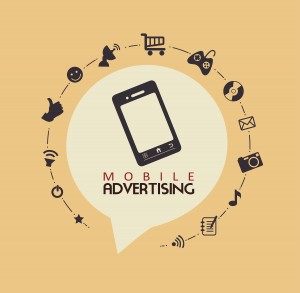This is the second in a series of posts walking readers through the mobile advertising space. Stay tuned for more posts over the coming weeks. This post is also published on the Rubicon Project blog.

Fixing Mobile
In the last post I reviewed the market opportunity in mobile advertising and examined the unique challenges with each of the major operating systems in the market. This post will focus on the various mobile devices and provide a structure for defining what constitutes “mobile”. Rather than thinking about mobile as one large group, let’s break it down by device type and screen size. Most devices (laptop, phone or tablet) now are “mobile” in that you could conceivably carry them around and get a Wi-Fi signal, browse the Internet and check email. However, research (and common sense, really) shows that this isn’t true in practice. From a practicality standpoint, how many people do you see walking down the street with an open laptop versus people typing away on their phone?
The term “mobile” gets thrown around and is used to classify pretty much any device that can be carried. However, to develop a comprehensive mobile strategy, you should think beyond the device and instead consider the form factor (i.e. size, shape, weight of the device) as well as how it is used. Through this lens, it becomes very apparent that smartphones and tablets are quite different even if both could be called mobile.
The mobile phone is very personal to the user. It’s intimate, portable, in the pocket and always, ALWAYS with the person. According to a Gartner study of device usage, mobile phones are used throughout the day – 65% of users use them outside the home and 66% use them at work. These stats indicate that these devices are truly made to be on-the-go. Giordano Contestabile of PopCap Games enlightened a group at the Business Insider Mobile Advertising Conference with some survey results on PopCap’s users. He indicated that 27% of their users take their phones to the bathroom. Consider that next time you ask to use someone else’s phone. All humor aside, this is clearly why the phone has been called mobile – it helps users with navigation, communication, entertainment and information in real time.
Tablets are different than mobile phones. They are not as personal as phones. Rather, tablets are often shared by a household rather than used by a single person. Perhaps due to this shared nature, they’re most commonly used at home. “But tablets are portable,” you’d argue. Sure, your tablet goes places. It rides on the train, gets read on the plane, entertains children in the car; but it’s not in anyone’s pocket. So it’s definitely on the mobile spectrum, but also definitely isn’t the same use case as a smartphone. Apple’s recent announcement of the iPad Mini has created further nuance among these devices and introduced a new type – the mini tablet. While the jury is out on just how mobile these mini tablets will be, they will probably be used in ways that are more like standard tablets than phones..
Recent data from Neilson indicates that people will browse and search for products on their phone and tablet. However, when it comes to purchasing, the tablet is king with 42% of respondents buying goods through the bigger screen. A second, rapidly growing usage of tablets is as the second screen in a newly coined “two screen experience”. Epic shows like Game of Thrones and The Walking Dead offer the enhanced experiences, sometimes with synchronized content on both screens. In this scenario users are on the couch, in front of their TV, watching a show while consuming the additional content available on their tablet. The online components of big budget entertainment productions are no longer in the hands of lowly interns monitoring blogs and twitter. Instead, the enhanced offering and growing user base is drawing unique components of advertiser budgets.
As you develop the user experience for your content, you should weigh these different use cases. By thinking beyond the definition of “mobile” you can get to the root of how a device and its form factor can impact user experience. Is your content immersive and does it require a larger form factor, or is it largely text-based? What are the most common devices that are used to access your content? The answers to these questions can serve as a guide to formatting and building content for mobile. What do you think? Do you consider phones and tablets separately, or does their extreme portability make them mobile? Comment below for other readers and I’ll address questions in future posts.





 In 2013, eMarketer data suggests that the US mobile advertising market will be a two billion dollar business. Over one third of those dollars will hit display advertising on mobile devices. This is not a steady state. The market is growing 45%-60% year over year, and this trend will continue for at least the next few years.
In 2013, eMarketer data suggests that the US mobile advertising market will be a two billion dollar business. Over one third of those dollars will hit display advertising on mobile devices. This is not a steady state. The market is growing 45%-60% year over year, and this trend will continue for at least the next few years. Apple has several sizes and shapes in their line of computers and iPods, but only one size and shape to their phone. Sure, you can get 3G or 3GS with a variety of storage onboard, but the device itself comes with the same processor, same graphics, same screen size, same camera, same ins and outs.
Apple has several sizes and shapes in their line of computers and iPods, but only one size and shape to their phone. Sure, you can get 3G or 3GS with a variety of storage onboard, but the device itself comes with the same processor, same graphics, same screen size, same camera, same ins and outs.
